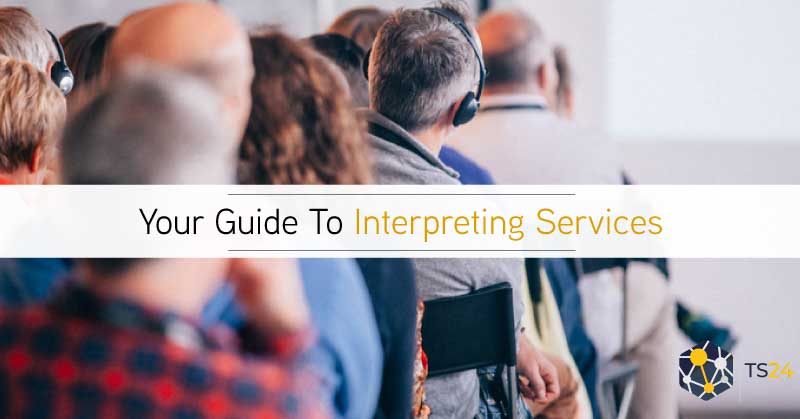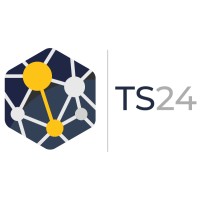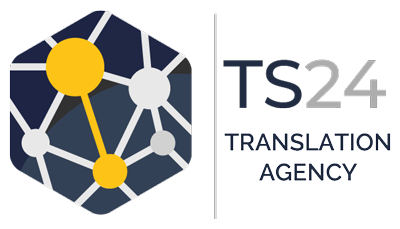Your Guide to Interpretation Services
Your global clientele expects you to hold meetings in a language they can easily understand. However, delivering your message reliably to an international audience is often only possible with the use of an interpreting service.
It’s a service that converts real-time speech into the listener or reader’s preferred language. It’s different from a translation service and requires more robust runtime processing.
Simultaneous interpreters follow a framework known as the simultaneous interpretation guide, which we’ll discuss in this article. But first, let’s understand the difference between interpretation and translation.
Interpretation vs. Translation Services
Many consider interpretation and translation as the same activity. These businesses even invest in either of the services without fully understanding the different types of interpretation and interpreting services available.
That’s why it’s essential to know the difference between interpretation and translation.
What is Interpretation?
Interpreting converts an idea, speech, or thought into a spoken form. Interpretation is a mandatory process if your business activities encompass global stakeholders like
- Clients
- Investors
- Business partners
You might have a highly diversified team that collaborates almost daily. However, you should communicate using one language to understand every word and phrase and to avoid miscommunication which can cause errors. To fill that gap, you might require a simultaneous interpretation service and efficiently collaborate with your business stakeholders.
What is Translation?
Professional language translations refer to converting a document from one language into another in a readable format. Translators don’t work simultaneously. Instead, they first receive the documents to be translated, analyse them, and begin the translation process. Unlike interpreters, translators have a set period to execute the translation job. Therefore, they can research and prepare before delivering the final translated version, whereas an interpreter can only prepare beforehand.
Importance of Hiring a Simultaneous Interpreting Service
Simultaneous interpreters are essential for your international meetings, presentations, and seminars. For example, suppose your audience is from different regions, like China (Simplified Chinese) and Spain (Spanish), who need to communicate in English.
This is when you would need to hire professional simultaneous interpreters to act as the bridge between both parties. These types of assignments are usually scheduled during a conference, whether it is virtual or in person. Since each party cannot understand each language, the interpreters you hire will interpret every word.
In short, a simultaneous interpretation service provides you with a team of professional interpreters, usually a team of two, who interpret your communication in real-time.
Types of Interpretations
There are two types of interpretation services available.
Consecutive Interpretation
In consecutive interpretation, interpreters continuously listen to the speaker and wait for them to pause. During the pause, interpreters interpret what is being said. Consecutive interpreting is the most common type of interpreting that most businesses require and typically lasts for a couple of hours per project.
Consecutive interpretation is primarily required in small-group conversations, like consultations and medical appointments.
Speakers know what interpretation has been deployed in the meeting and act accordingly. For example, for consecutive interpretation, speakers intentionally and frequently pause while delivering their speech.
For example, during a court hearing, a solicitor will speak with frequent pauses because they know their client will need the interpreter’s assistance to act as the bridge between all parties.
Simultaneous Interpretation
The second interpretation style, i.e., simultaneous interpretation, is similar to the first. However, a simultaneous interpreter doesn’t wait for the speaker to pause. Instead, interpreters keep interpreting every word while the speaker is talking.
For example, if an ambassador is giving an urgent speech to an international audience, simultaneous interpreters will continuously interpret that speech without waiting for the speaker’s pause. As a result, listeners will receive real-time audio in their preferred language.
Workings of a Simultaneous Interpreter
You now have an idea of how challenging simultaneous interpretation is. This interpretation style requires specialised interpreters to have strong mental and cognitive capacities. Since simultaneous interpreting service is real-time and non-stop, interpreters of this category must be highly adaptable to languages.
Simultaneous interpreters spend years training and acquiring the skill needed for interpreting simultaneously. Simultaneous interpreters ideally listen and talk while interpreting the speech in the required language.
Remember that a simultaneous interpreter can only work for up to 90 minutes due to the high level of mental effort. That’s why simultaneous interpreters work in pairs for longer projects to keep the interpretation continuous.
Use of Microphones and Headphones
Simultaneous interpreters work in a closed environment, especially a cabin from where they set their equipment. They don’t use any special technology except noise cancellation and voice quality-enhancing tools.
Their standard equipment includes:
- Microphone
- Headphone
On average, simultaneous interpreting costs more than consecutive interpreting. This service costs more, including equipment, specialisation, and complexity. Clients are usually charged a half-day or full-day rate for simultaneous interpreting, while consecutive interpreting is charged hourly.
High Interpretation Skills
Simultaneous interpreters develop their interpretation skills early. They sharpen their listening ability to understand what’s being said fully. Simultaneous interpreters first become quality active listeners and pass listening tests to track their progress.
Simultaneous interpreters are highly adaptable. They listen, understand, and give an interpretation in real-time, which is complex and requires great skill.
Subject Knowledge
Subject knowledge is vital when providing simultaneous interpreting. A professional interpreting service provider will assign a project to professional interpreters who are experts in a particular field relevant to the assignment.
For example, simultaneous interpreters who know about politics must excel in the political environment and public relations. Similarly, a financial interpreter must-have essential advanced knowledge of modern economic methodologies.
Before booking a simultaneous interpreter, you should check the expertise of the agency you will book with. The interpreter must have the proper credentials and understand complex vocabulary and subjects according to the context.
Key Takeaways
Simultaneous interpreters work in a multilingual, robust environment which is quite challenging. They also follow an interpretation pattern to keep pace with ongoing communication.
That’s why they must train themselves extensively to give their best real-time interpretation service, as avoiding mistakes during simultaneous interpreting assignments is crucial.
About the Author
Translation Services 24 (TS24) is a professional London translation agency offering expert services in over 200 languages. We work with clients in all corporate and public industries and specialise in sector-specific linguistic solutions. With over a decade of experience in the industry, 15+ million words converted every year and 100,000+ projects completed, TS24 is a leading provider of expert translations and interpretation services and an officially certified member of the ATC. Contact TS24 here.
Follow Translation Services 24 on Social Media







